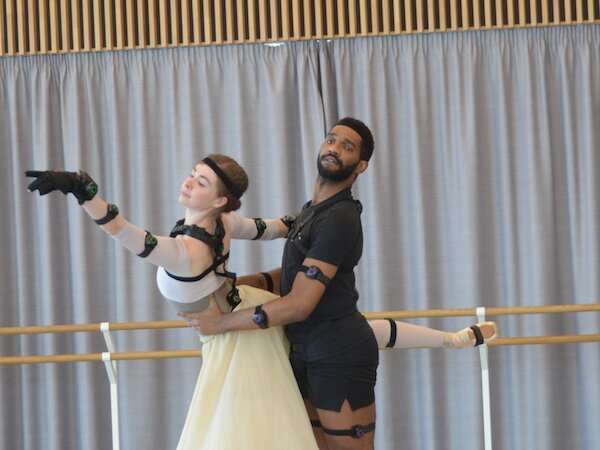This article has been reviewed according to Science X's editorial process and policies. Editors have highlighted the following attributes while ensuring the content's credibility:
fact-checked
trusted source
written by researcher(s)
proofread
Ballet dancers in sensor suits: New research explores how dance is used as a form of communication

Audio guides, maps, traditional and interactive texts help people attending art exhibitions to understand the works in front of them. With dance, however, the audience's understanding is usually taken for granted.
It's assumed they will make sense of a performance thanks to the synopsis included in programs, or reviews published in newspapers and magazines. These supporting materials are optional and do not work during performance. However, the English National Ballet (ENB), for example, has produced versions of classical ballets for young audiences where dancers perform a shortened version of a well-known classical ballet while a narrator recites the story.
But words cannot translate everything dance expresses. Verbal and movement-based communication can convey similar meanings, but they do so in very different ways. Whereas verbal language is immediately understood, the language of dance can be lost to a general audience.
So how can dance performances become a more accessible source of cultural and social information for people who are not specialists?
Detecting communication
Our research group focuses on Kinesemiotics, the study of meaning made by movement, an area we are developing. Our project, called The Kinesemiotic Body, is carried out at Loughborough University in collaboration with researchers at the University of Bremen and the ENB.
The Functional Grammar of Dance (FGD) explains how body parts create meaning by interacting with the space and the people surrounding dancers in a performance. We used it to annotate and interpret data collected from live dance rehearsals.
The FGD draws on linguistics and semiotic theories (how people communicate through signs) and is based on "projections". Projections are the trajectories designed by dancers when extending their body parts towards meaningful portions of the performance space.
Projections connect extended body parts to surrounding people or objects, creating a meaningful visual interaction. Imagine a dancer moving towards a lake, painted on the backdrop of a stage. They extend an arm forward towards the lake and a leg backwards towards a stage prop representing a shed. That extended arm will mean "going to lake" while the leg will mean "coming from shed".
Projections can also be directed to the audience creating an "involving" effect. This is achieved, for example, when a dancer extends their arms towards the audience while facing them with their face and torso. This looks as if they are addressing them directly, acknowledging their presence and breaking the invisible wall between them.
Projections are like speech bubbles made by movement. Our research captured them through sensor suits that dancers wear during our data collection and we decoded them using the FGD. When we annotate the data produced by the suits, we basically fill those speech bubbles with meaning that people can understand without having background knowledge of dance. Our recordings and annotations capture not only movements, but also the intended meaning behind them.
During our sessions, we worked with two pairs of fantastic dancers: Junor Souza and Rebecca Blenkinsop from the ENB, and school graduates Elizabeth Riley and Jamie Constance.
We have achieved interesting results. By annotating choreography with our system, it is possible to discover patterns of movement-based communication. These patterns may not be immediately visible to the naked eye, but clearly inform the message the audience perceives.
We also found out that it is possible to study how movement patterns work in relation to costumes, which is especially interesting when choreographers experiment with innovative clothing and props.
For example, we worked on the effects of movement combined with elastic cloth that covered a dancer's body almost entirely. This highlighted how a particular type of costume choice would impact on the expressive potential of movement.
Our data also highlighted how dancers playing the same role can create different versions of the same character according to variations they make in performing projections. For example, one dancer might decide to engage more with the audience than another by performing more projections that directly address the viewers.
We can also check how a dancer manages physical balance during a performance in relation to these projections, which is particularly clear in their legwork and footwork. This type of information can be particularly helpful for physical rehabilitation.
An injury can deeply affect a dancer's or an athlete's ability to manage body balance and our annotation highlighted the specific choices a dancer makes when managing it. The information provided by our data annotation can therefore provide valuable information on how a dancer works towards recovery.
In future our work will look at whether specific projections can help audiences with different degrees of familiarity with dance to engage with a dance performance more easily.
Provided by The Conversation
This article is republished from The Conversation under a Creative Commons license. Read the original article.![]()





















